Best Online Marketplaces for E-Commerce & Directory Listing Business Brands and Sellers
The improvement of technology and the recent pandemic have taught us to live in an era where online marketplaces have revolutionized the way businesses operate and consumers shop. These virtual platforms bring together buyers and sellers from around the world, providing a convenient and efficient way to engage in e-commerce. Online marketplaces act as intermediaries, connecting sellers with a vast pool of potential customers and offering a range of tools and services to facilitate transactions.
These platforms often offer features such as secure payment processing, customer support, and logistics services, making it easier for sellers to manage their operations. By leveraging the marketplace’s existing infrastructure, sellers can focus on product sourcing, marketing, and customer relationship management, while leaving the technical aspects to the platform.
While there are numerous online marketplaces available, each with its own unique features and target audience, two of the most prominent players are Amazon and eBay. These marketplaces have established themselves as industry leaders, offering extensive product catalogs, reliable customer service, and robust seller support systems. Apart from these two, we will talk about some best online marketplaces for E-commerce brands and sellers. So without further ado, let’s dive in.
What is an Online Marketplace?

An online marketplace is a digital platform where multiple sellers and buyers come together to trade goods or services. It serves as an intermediary that connects sellers with potential buyers, facilitating transactions between them. Unlike traditional brick-and-mortar stores, an online marketplace operates entirely online, allowing people from different geographical locations to participate in buying and selling activities.
In an online marketplace, sellers can create their profiles and list their products or services for sale. Buyers can browse through the listings, compare offerings, read reviews, and make purchases directly through the platform. The marketplace typically provides features for secure payment processing, order management, and customer support.
Again, online marketplaces can be general, offering a wide range of products across various categories, or they can specialize in specific niches. Examples of popular general online marketplaces include Amazon, eBay, and Walmart. There are also niche marketplaces like Etsy for handmade and vintage products, Airbnb for accommodations, and Uber for transportation services.
Usage Statistics of Online Shopping in The Marketplaces
- In 2022, online marketplaces witnessed consumer spending exceeding 3.25 trillion dollars.
- According to Pew Research Center, 85% of Americans confess that they go online regularly.
- According to Forbes, in 2021, global e-commerce sales are expected to reach $4.2 trillion.
- Forrester says by the year 2023, it is projected that e-commerce and marketplaces will account for approximately 17% of all transactions.
- According to Statista, the average e-commerce spending per online visit was $3.
10 Best Online Marketplaces for E-Commerce Success
Several online marketplaces can help you achieve e-commerce success. The choice of marketplace depends on various factors such as the type of products you sell, your target audience, and your business goals. Here are some of the best online marketplaces for e-commerce success.
1 . Amazon
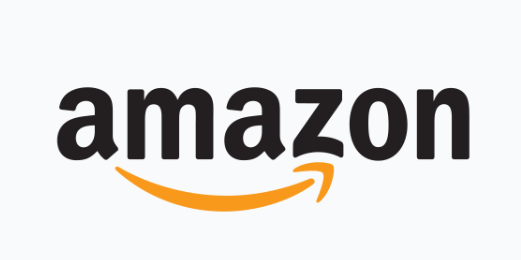
Amazon is an e-commerce company and online marketplace that was founded by Jeff Bezos in 1994. It started as an online bookstore but quickly expanded to sell a wide variety of products, including electronics, clothing, home goods, and more. Today, Amazon is one of the largest and most popular online retailers in the world.
As an online marketplace, it allows both individuals and businesses to sell their products on its platform. Sellers can list their items for sale, and when a customer makes a purchase, Amazon handles the transaction, shipping, and customer service. In addition to its marketplace, this platform sells its products, such as the Kindle e-reader, Echo smart speakers, and Fire tablets.
Moreover, this marketplace has a global presence, with separate websites and marketplaces for different countries, including the United States, United Kingdom, Germany, France, Japan, and many more. It has millions of active customers and offers a wide range of services, including Amazon Prime, which provides free two-day shipping on eligible items, access to streaming services like Prime Video and Prime Music, and other benefits.
In addition to its retail operations, Amazon has expanded into various other business areas. It provides cloud computing services through Amazon Web Services (AWS), which has become a significant revenue generator for the company. Businesses looking to optimize their cloud infrastructure often turn to AWS consulting services to make the most of AWS’s powerful features. It also owns Whole Foods Market, a chain of grocery stores, and operates Amazon Studios, which produces original TV shows and movies.
Overall, Amazon has had a significant impact on the retail industry and has transformed the way people shop online. Its vast selection of products, competitive pricing, and convenient services have made it a dominant force in online marketplaces. Let’s have a closer look at the Amazon marketplace statistics.
- According to the eMarketer, Amazon experienced a 44.1% growth in its U.S. sales in the year 2020.
- What NPR Marist Poll says, is that Amazon experienced a 44.1% growth in its U.S. sales in the year 2020.
- According to Statista, this marketplace is chosen by 79.8% of Amazon shoppers due to its “fast, free shipping.”
2. eBay

eBay is an online marketplace that facilitates buying and selling of various goods and services. It was founded in 1995 and has become one of the largest e-commerce platforms globally. It allows individuals and businesses to list items for sale, including new and used products, collectibles, electronics, fashion, home goods, and much more.
On eBay, buyers can browse through the listings, place bids on auction-style items, or purchase items at fixed prices using the “Buy It Now” option. Sellers can create listings with detailed descriptions and images, set prices, and choose between auction-style or fixed-price formats.
More importantly, this platform provides a platform for connecting buyers and sellers from around the world. It enables users to search for specific products, compare prices, and read reviews from other buyers to make informed purchasing decisions. Transactions are typically conducted through PayPal or other approved payment methods.
In addition to its primary marketplace, it also offers various features and services such as eBay Motors for buying and selling vehicles, eBay Classifieds for local classified ads, and eBay Stores that allow sellers to create customized online storefronts.
As with any online marketplace, both buyers and sellers need to be aware of potential risks and exercise caution when conducting transactions. eBay has implemented measures to promote a safe and secure environment, including buyer and seller protection programs, customer support, and feedback systems to help maintain trust and accountability within the community. Here are some statistics of eBay Marketplace.
- According to Statista, eBay’s annual net revenue in 2020 amounted to $10 billion.
- As of December 2019, eBay had a global user base of 183 million active shoppers. (Statista).
- eBay has localized operations in more than 30 countries. (Statista).
3. AliExpress

AliExpress is an online marketplace that was launched in 2010 by the Alibaba Group, a multinational conglomerate based in China. It is one of the most popular e-commerce platforms globally, connecting buyers from around the world with sellers primarily based in China and other countries.
It operates as a business-to-consumer (B2C) platform, where individual sellers and small businesses can list and sell their products directly to consumers. The platform offers a wide range of products, including electronics, clothing, home goods, beauty products, accessories, toys, and much more.
One of the key features of AliExpress is its competitive pricing. Many sellers on the platform offer products at lower prices compared to traditional retail stores, making it an attractive option for bargain hunters. However, it’s important to note that the quality of products can vary, so it’s essential to read reviews and check seller ratings before making a purchase.
More importantly, this platform provides a user-friendly interface and supports multiple languages, making it accessible to customers worldwide. The platform offers various payment options, including credit cards, debit cards, and online payment systems like PayPal. It also provides buyer protection services, such as escrow payment, to ensure that customers receive their orders or get a refund if there are any issues.
Shipping times on AliExpress can vary depending on the location of the seller and the shipping method chosen. Free or low-cost shipping options are often available, but they may take longer to deliver. Alternatively, customers can opt for faster shipping methods, but they may incur additional costs.
Overall, this online marketplace is known for its vast product selection, competitive prices, and international shipping options. However, it’s essential to exercise caution and research sellers before purchasing to ensure a positive shopping experience. Now, let’s get to some of the insights of the AliExpress online marketplace.
- AliExpress boasted over 150 million buyers in the final quarter of 2020. (Alibaba).
- Beijing Review says by 2030, AliExpress will have increased its international clientele to 30 million.
- AliExpress Spain will make $40 billion by 2023 ( eMarketer)
4. Rakuten
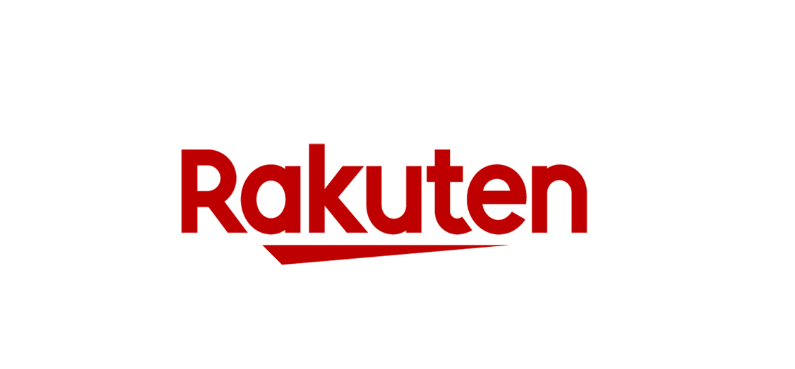
Rakuten is a Japanese e-commerce company that operates an online marketplace, providing a platform for individuals and businesses to buy and sell various products and services. It was founded in 1997 by Hiroshi Mikitani and is headquartered in Tokyo, Japan.
This online marketplace offers a wide range of products, including electronics, clothing, accessories, home goods, cosmetics, books, and more. It functions as an intermediary, connecting sellers and buyers on its platform. Sellers can set up their online stores within Rakuten and list their products, while buyers can browse and purchase items directly from these sellers.
One unique aspect of Rakuten’s marketplace is its loyalty program called “Rakuten Super Points.” When customers make purchases on the platform, they earn Super Points, which can be redeemed for discounts on future purchases. This program encourages customer loyalty and repeats business.
More importantly, this online marketplace has expanded its operations beyond Japan and established a global presence. It acquired several international companies, including Buy.com in the United States, PriceMinister in France, and Play.com in the United Kingdom, among others. This allowed Rakuten to extend its marketplace services to customers worldwide.
In addition to its online marketplace, it offers various other services, such as e-books, streaming services, travel bookings, mobile communications, online banking, and credit card services. The company has also ventured into areas such as fintech, artificial intelligence, and telecommunications.
Finally, Rakuten’s goal is to create a comprehensive ecosystem of services for its customers, offering convenience and value through its online marketplace and diverse portfolio of digital services. Here are Rakuten’s Statistics.
- The majority of shopping for approximately 48.8% of households in Japan in 2022 is done online.
- In 2014, Rakuten had already gathered more than 40,000 online merchant sellers.
5. Shopee

Shopee is an online marketplace and e-commerce platform that allows individuals and businesses to buy and sell products online. It was launched in 2015 by Sea Group, a Singaporean multinational company, and has since become one of the leading e-commerce platforms in Southeast Asia.
It operates in multiple countries, including Singapore, Malaysia, Indonesia, Thailand, Vietnam, the Philippines, and Taiwan. It provides a user-friendly interface and a mobile application that allows users to browse and purchase a wide range of products, including electronics, fashion, beauty products, home appliances, and more.
Most importantly, the platform offers various features and services to facilitate online shopping. These include secure payment options, such as credit card, bank transfer, and ShopeePay (their digital wallet), as well as buyer protection policies to ensure a safe and reliable shopping experience. It also provides a rating and review system for sellers, allowing buyers to make informed decisions based on the experiences of previous customers.
Additionally, this online marketplace regularly organizes promotional campaigns, flash sales, and discounts to attract customers and provide them with competitive prices. They also have a strong focus on social commerce, incorporating social media features that enable users to follow their favorite sellers, interact with them, and discover new products through personalized recommendations.
Finally, Shopee’s success can be attributed to its user-friendly interface, extensive product range, competitive pricing, secure payment options, and customer-centric approach. It has become a popular choice for online shopping in Southeast Asia, attracting both individual sellers and established businesses to reach a wide customer base in the region. Now, let’s have a closer look at some statistics of Shopee.
- Shopee’s revenue for the year 2022 reached $7.3 billion annually.
- During the fourth quarter of 2022, the cumulative Shopee orders amounted to 1.7 billion, which was a decrease from the 2 billion orders recorded in the same period of 2021.
6. Lazada

Lazada is an online marketplace that was established in 2012 and operates primarily in Southeast Asia. It was founded by Rocket Internet and has since become one of the leading e-commerce platforms in the region. It provides a platform for sellers to list and sell their products to a wide customer base.
Customers can browse through various categories such as electronics, fashion, beauty, home appliances, and more. Interestingly, this online platform offers a convenient shopping experience with multiple payment options, including credit/debit cards, online banking, and cash on delivery (COD) in select areas. They also provide secure payment gateways to ensure the safety of transactions.
Lazada is known for its promotional campaigns and deals, including flash sales, discounts, and vouchers, which attract customers looking for bargains. They also have a customer review system that helps buyers make informed purchasing decisions based on feedback from other shoppers.
In addition to its website, Lazada has mobile applications for iOS and Android devices, making it easy for customers to shop on the go. They also offer localized versions of their platform in different countries, such as Lazada Philippines, Lazada Indonesia, Lazada Malaysia, and more.
Again, this platform has expanded its services over the years and now offers additional features such as LazMall, which guarantees product authenticity and quality, as well as Lazada Wallet, a digital payment solution integrated into the platform. They also provide logistics and fulfillment services to assist sellers in managing their inventory and deliveries.
Overall, Lazada has become a popular online marketplace in Southeast Asia, providing a wide range of products, secure payment options, and convenient shopping experiences to customers in the region. Here are the statistics of Lazada.
- Lazada recorded an estimated monthly visitor count of around 7.18 million in the first quarter of 2022.
- In Singapore, Lazada holds the second position among the most frequently clicked e-commerce platforms on a monthly basis.
7. Etsy

Etsy is an online marketplace that connects sellers and buyers who are interested in unique and handmade items. It was launched in 2005 and has since grown into a global community of artisans, crafters, and small businesses.
On Etsy, sellers can create their online shops and list their handmade or vintage items, as well as craft supplies. This can include a wide range of products such as jewelry, clothing, home decor, artwork, toys, and more. More significantly, it provides tools and resources to help sellers manage their shops, including customizable storefronts, inventory tracking, and payment processing.
Buyers can browse and search for products on Etsy, discovering a diverse selection of unique and often one-of-a-kind items. They can communicate directly with sellers, ask questions, and even request custom orders. This online marketplace also provides a review system, allowing buyers to leave feedback about their purchases and experiences.
Etsy has gained popularity for its focus on supporting independent artists and small businesses. It provides a platform for creative entrepreneurs to reach a global audience and sell their products directly to customers. The marketplace emphasizes handmade, vintage, and personalized items, promoting the values of craftsmanship and individuality.
Over the years, it has expanded its offerings and introduced new features. For example, they introduced Etsy Studio, a platform for selling craft supplies, and Etsy Wholesale, which connects sellers with retailers interested in carrying their products. They also have a mobile app for convenient shopping on smartphones and tablets.
Overall, Etsy has become a prominent online marketplace for sellers and buyers looking for unique, handmade, and vintage items, fostering a community of artists and creative individuals. Here are some insights into Etsy.
- Etsy witnessed the addition of 61 million fresh and returning shoppers in the year 2020. (Etsy)
- In 2020, Etsy’s revenue surpassed $1.7 billion, skyrocketing by more than 100% compared to the previous year. (Statista)
- California is home to 14% of the sellers on Etsy. (Statista)
- The homemade category of Home and Living reigns as the top favorite on Etsy, constituting a remarkable 25% of their sellers. (Statista)
8. Flipkart

Flipkart is an Indian e-commerce company that operates as an online marketplace, connecting sellers and buyers. It was founded in 2007 by Sachin Bansal and Binny Bansal and is headquartered in Bengaluru, Karnataka, India.
As an online marketplace, it provides a platform for various sellers to showcase and sell their products to a large customer base. The platform covers a wide range of categories, including electronics, fashion, home appliances, books, beauty products, furniture, and more. Sellers can create their accounts on Flipkart and list their products for sale, thereby reaching millions of potential customers.
On the other hand, buyers can browse through the vast catalog of products on Flipkart’s website or mobile app and make purchases directly from sellers. This online marketplace offers a user-friendly interface, secure payment options, and reliable delivery services to ensure a seamless shopping experience for customers.
Over the years, Flipkart has become one of the largest e-commerce companies in India, competing with other major players in the industry. In 2018, Walmart acquired a majority stake in Flipkart, further strengthening its position in the market.
This platform has also launched various initiatives to enhance its services, such as Flipkart Plus, a membership program that offers benefits like free and faster deliveries, early access to sales, and exclusive rewards for loyal customers.
In addition to being an online marketplace, it has ventured into different segments, including digital payments, fashion brands, and private labels. The company has its own logistics network and partners with various sellers and brands to offer a diverse range of products to its customers.
Overall, Flipkart has played a significant role in transforming the e-commerce landscape in India, providing a platform for sellers to expand their businesses and offering a convenient shopping experience for buyers across the country. Let’s get to the statistics of Flipkart.
- Per month, Flipkart manages approximately 8 million shipments.
- According to Statista, in the financial year 2022, Flipkart Private Limited generated revenue exceeding 511 billion Indian rupees.
9. Taobao

Taobao is an online marketplace based in China. It was launched in 2003 by the Alibaba Group and is one of the largest e-commerce platforms in the world. It is primarily used for consumer-to-consumer (C2C) retail, where individual sellers can list their products for sale to a wide audience of buyers.
On Taobao, sellers can create virtual storefronts to showcase and sell their products, ranging from electronics and fashion to home goods and more. Buyers can browse through the extensive product listings and purchase items directly from the sellers. It provides a wide range of features and tools to facilitate transactions, including secure payment options, customer reviews, and a messaging system for communication between buyers and sellers.
One of the key features that set Taobao apart is its emphasis on social shopping and engagement. Buyers can follow their favorite sellers, leave reviews and ratings, and interact with other users through comments and discussions. This social aspect creates a vibrant and interactive community within the platform.
To use this online marketplace, users typically need to create an account, and sellers may need to go through a verification process to ensure the legitimacy of their businesses. Taobao offers various payment options, including Alipay, which is a popular digital payment platform in China.
It’s worth noting that while Taobao is primarily targeted toward the Chinese market, international buyers can use the platform. However, language and shipping considerations may come into play, as most listings and interactions on Taobao are in Chinese. Let’s have a closer look at the insights of Taobao.
- As of that month, Taobao had amassed a staggering user base of over 876 million active monthly users, solidifying its position as one of the most beloved shopping apps in China. (Statista)
- taobao.com’s audience is 65.78% male and 34.22% female.
10. Facebook Marketplace
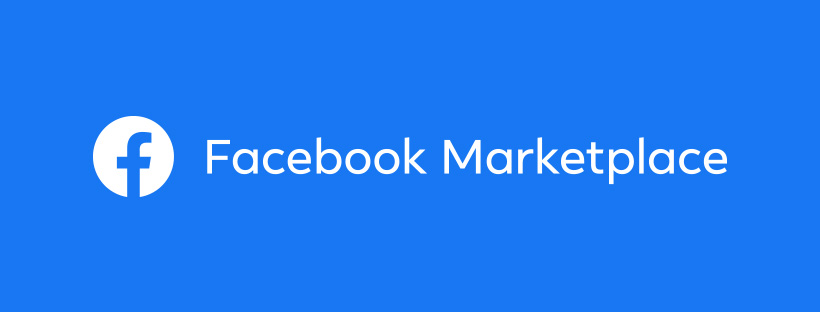
Facebook Marketplace is an online platform where you can buy and sell items within your local community. It’s like a virtual garage sale or classifieds section. You can access it through the Facebook website or app.
When you visit Facebook Marketplace, you’ll see a variety of categories such as Home & Garden, Electronics, Clothing, Vehicles, and more. You can browse through these categories to find items you’re interested in, or you can use the search bar to look for specific things.
Once you find an item you want to buy, you can click on it to see more details, including photos, description, price, and the seller’s location. If you have any questions or want to negotiate the price, you can send a message to the seller using Facebook Messenger.
If you’re selling something, you can create a listing by uploading photos of the item, writing a description, and setting a price. You can also choose whether you want to offer local pickup or delivery.
When it comes to transactions, most interactions on Facebook Marketplace happen locally. This means you’ll typically meet the buyer or seller in person to inspect the item and exchange payment. It’s important to take precautions for your safety, such as meeting in a public place and bringing a friend with you if you feel more comfortable.
Facebook Marketplace provides a platform for connecting buyers and sellers, but it’s important to note that Facebook itself doesn’t handle the payment or shipping process. It’s up to the individuals involved in the transaction to work out the details.
Overall, Facebook Marketplace offers a convenient way to buy and sell items within your local community, allowing you to find great deals and make connections with people nearby. Let’s have some statistics of Facebook Marketplace.
- At least once per day, the platform is visited by 74% of U.S. adults who use Facebook. (Pew Research Center)
- In 2018, Facebook CEO Mark Zuckerberg stated that Facebook Marketplace draws in more than 800 million users every month.(CNBC)
- According to private sellers, the success rate for selling items on Facebook Marketplace stands at an impressive 70%. (CNET)
What are the Benefits of Using Online Marketplaces over Traditional Methods of Selling?

Using online marketplaces offers several benefits over traditional methods of selling. Here are some of the key advantages.
i. Wider reach
Online marketplaces provide access to a vast customer base, potentially reaching millions of users worldwide. Sellers can tap into new markets and attract customers beyond their local area.
ii. Increased visibility
With their integrated search functionality and product categorization, online marketplaces facilitate the discovery and accessibility of your products or services, ultimately enhancing the chances of potential customers finding and purchasing from you, thereby opening up greater sales opportunities.
iii. Lower costs
Setting up an online store on a marketplace is often more cost-effective than establishing a physical retail location. Sellers can avoid expenses related to renting or buying a physical space, hiring staff, and managing inventory.
iv. Convenience and flexibility
By leveraging online marketplaces, sellers gain the ability to run their businesses from anywhere as long as they have an internet connection. This exceptional flexibility empowers entrepreneurs to effortlessly manage their stores on a part-time or full-time basis, accommodating their schedules and other obligations.
v. Trust and credibility
Established online marketplaces typically have built-in reputation systems, such as customer reviews and ratings, which contribute to a sense of trust and credibility. Buyers are more likely to purchase from sellers with positive feedback, increasing the chances of sales for reputable sellers.
vi. Streamlined transactions
Integrated payment systems are frequently offered by online marketplaces, guaranteeing secure and efficient transactions and alleviating sellers’ concerns regarding the setup of their payment processing infrastructure. This simplifies the payment handling process, saving time and reducing complexity for sellers.
vii. Marketing and promotional tools
Many online marketplaces offer marketing and promotional features to help sellers increase their visibility and attract customers. These can include options for sponsored listings, targeted advertising, and promotional campaigns, which can be more accessible and affordable than traditional marketing methods.
viii. Customer support and dispute resolution
Marketplaces typically provide customer support services, handling inquiries, and assisting with any issues that may arise during the buying process. They also offer dispute resolution mechanisms to help resolve conflicts between buyers and sellers, providing a sense of security and trust to both parties.
Over to You!
Online marketplaces have revolutionized the world of e-commerce, offering brands and sellers an unprecedented platform to connect with a global audience. These digital hubs foster creativity, accessibility, and limitless potential, providing a win-win situation for both buyers and sellers. The best online marketplaces continue to evolve, embracing new technologies and creating an immersive shopping experience that transcends borders and empowers businesses to thrive.
If you like our posts, don’t forget to subscribe to our blog so that we can notify you once any post is published. Last but not least, Directorist is now on Facebook! Join the Directorist Community for sharing your thoughts and experiences relating to the directory niche. Come and join us to see what we’re up to. 🙂

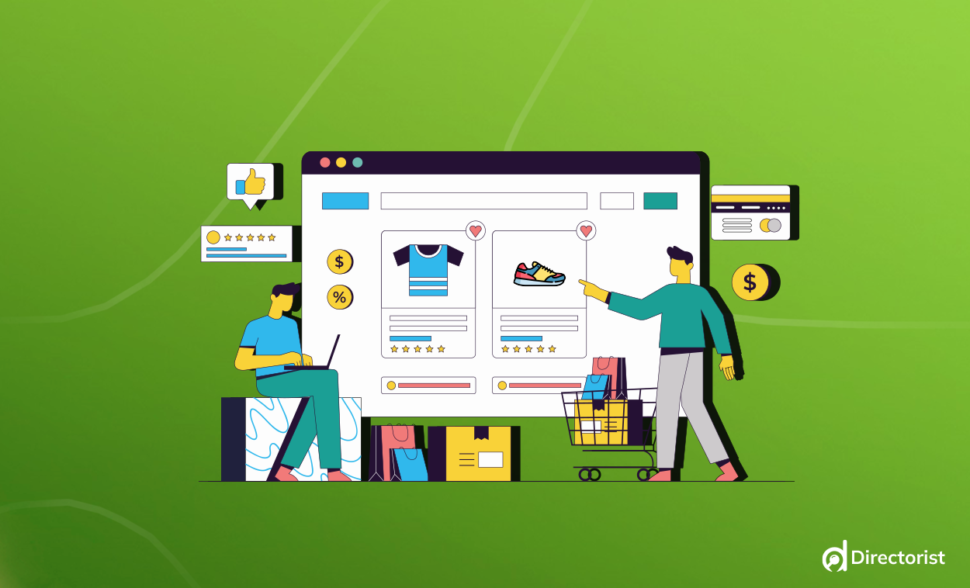

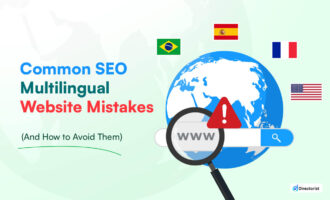
Leave a Reply
You must be logged in to post a comment.